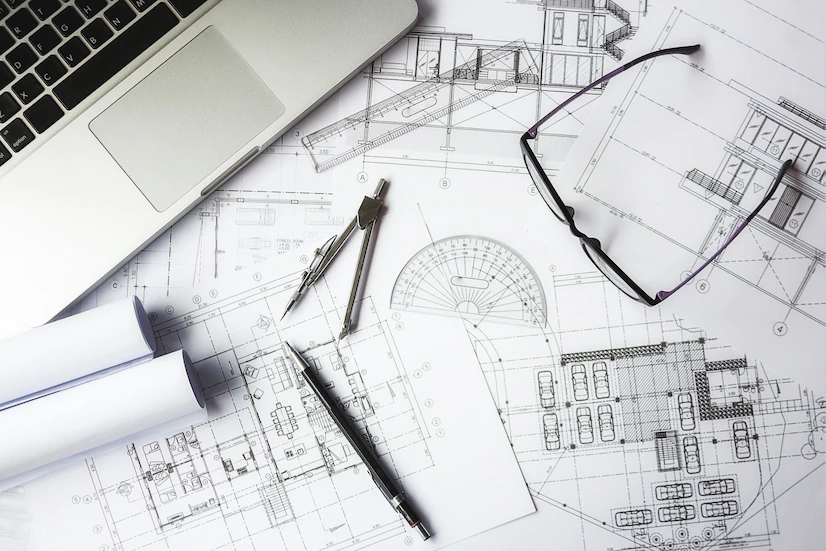What does costing and estimating mean? – Definition & Methods. Calculating or assessing a number using guesswork, that is, without using precise measurements, is what is referred to as estimation. In civil engineering and other technical fields, estimating is a vital procedure.
This is often done in the planning stages before a purchase or building starts. Estimating is often more accurate, but it has certain drawbacks, such as the requirement to know how many man-hours will be required to finish the project if your estimate is based on labour expenses.
Estimates are created based on observations and prior experience. The amount of information provided and the length of time that data is accessible for analysis both have an impact on how accurate an estimate is.
“Costing” is the process of calculating a project’s cost before it is finished. You may estimate it with a building cost calculator or by using an itemised list.
The three phases of costing are estimating, bidding, and finalising. It aids in estimating how much money will be needed to complete the job.
In general, “cost” refers to the price that will be incurred to manufacture one unit of an item, in this case, most likely building activity.
Costings come in two varieties: –
Independent Costing
This price reflects the direct expenditures for labour and materials. This kind of pricing is not indicative of the total cost of the project because it only accounts for the cost of a particular phase.
Cumulative Costing
Although it might be challenging to guarantee that estimates are correct, this sort of costing examines the overall cost for all work stages.
Importance of Estimation And Costing
It may be challenging for construction and engineering organisations to predict the costs of their projects. It’s important to understand the project’s rough size and scope as well as any potential need for more resources or manpower.
Estimating and pricing in civil engineering is a difficult procedure. The size of the project, the kind of materials that will be used, the labour costs, the necessary construction equipment, and other factors must all be known to the cost estimator. When planning, estimation may be used to anticipate how much money will be needed for construction of the full development.
Main purpose of Estimation And Costing
In civil engineering, costing and estimating are very significant. Estimating is the process or task of calculating a project’s cost while accounting for factors like personnel, materials, equipment, etc. As one might anticipate, it would be quite challenging to estimate a project’s costs without doing so first.
Costing is done to identify the cost of a single piece of work, whereas estimation is done to calculate the cost of a project. An estimate of its cost is required to determine if a project is worthwhile or not. In civil engineering, depreciation is not taken into consideration while estimating costs, which renders the estimates incorrect.
They make it possible for the customer and contractor to understand what is necessary to begin the project and what their out-of-pocket costs will be. Numerous software tools are available to aid in this process, but it is important for contractors to be familiar with these tools before using them on a construction site.
By estimating, you may prepare ahead of time to prevent cost overruns and give your team reasonable timelines. It also aids in budget planning, which should be based on the following three factors: building costs, equipment expenses, and human resource costs.
When you split the overall cost by the number of units required or required to create output over time, a cost estimate might turn into a budget. Costing is a crucial component of project management since it establishes the amount of money required to complete the task.
Time, materials, labour, and equipment are costs related to estimating, whereas capitalization (including interest), operations and maintenance, insurance, taxes, and depreciation are costs related to costing.
What varieties of estimating systems exist?
Time-based and activity-based estimate are the two options available.
Time-based estimation :- With time-based estimation, each work is given a time that is often based on the length of other activities that are comparable but were completed on earlier projects.
activity-based estimation :- Using historical or industry norms, activity-based estimating assigns an hourly rate to each work and calculates how long it will take to finish.
Different estimating systems come in different forms. The most typical categories of estimates are:
Parametric estimation :- A technique known as parametric estimation, which bases labour and material price estimations on the volume of products to be produced
Quantitative estimation :- employing unit rates for various goods, the quantitative estimating system estimates material and labour costs; and
Schematic Estimation :- In the real estate industry, the process of determining property values is called schematic estimation.
In addition to the ones mentioned above, there are also lump sum, unit pricing, and time and material estimate methods.
Lump sum :- The most typical estimate is a lump-sum technique, which is frequently employed for simpler operations with fewer phases. Each component of the work will be costed separately by the contractor.
The winning bidder, who must stay within their allotted budget, will have to estimate how much time will be required for each component before adding it all together to determine the total cost of the project.
Unit Pricing:- Unit price estimates entail dividing the entire area that has to be covered by the number of sheets required for the surface to get the overall costs for a certain material.
Material Estimation system :- A list of the quantities and prices of each item required for the project must be provided by the material estimating system. It should also list any equipment that will be hired out or brought in.
The project’s viability and profitability are assessed using the material estimation method in conjunction with other systems like scheduling and profitability analysis.
How are project budget estimates made?
Construction costs are estimated using quotations from suppliers, subcontractors, and the general contractor. The construction manager determines them after conducting a comprehensive site assessment, evaluating the project’s size and complexity while taking into account local labour prices and normal material expenses.
The size of the project and the number of workers required to execute it are typically taken into account when determining a project estimate. Project estimates will be greater in certain situations since larger projects frequently take longer to complete than smaller ones do.
When all the expenses for materials, equipment, and employees are calculated, an exact estimate of the project is produced. For instance, extra expenses for windows, doors, and stairs may be necessary if you are creating a tiny house. The cost of structural components will be higher for a medium-sized office building.
Estimates are created by specialists in the field of civil engineering. In order to determine a range of prices based on building costs, they evaluate the current market circumstances using their expertise, experience, and instruments. Then, a precise and reasonable estimate is computed using this data.
The main factors are the amount of time and resources required to do the activities. The estimator may also take into account any omitted factors that could have an impact on the task, including site access. Additionally, they could look into if there are any unforeseen expenditures for the project, such as those for hazardous waste cleanup, that might arise.
Estimating and Costing For Building a House
Knowing how much it will cost and how long it will take to build a house is important before you start. Document preparation for the estimating process includes making blueprints, drawings, and computations. These records are used to calculate the price of building a building or a bridge.
It begins with a floor plan created to meet the demands of the customer. A cost estimate will be developed by the architect, who is tasked with acting as the client’s representative, based on variables like the amount of available land and the number of floors it will have.
Following that, they would go through a series of steps to calculate how much labor, how much material, and other construction-related expenses would be required before developing a precise budget for the project.
Building a house involves a complicated process of estimation and costing. In order to determine an approximate estimate of the project’s overall cost, it is necessary to evaluate the project’s scope of work and the expenses connected with it. Then, unit pricing for those costs must be applied to the project.
Civil engineers are frequently the ones who do these estimations for a variety of reasons, including their experience, their familiarity with the materials and their related prices, and their access to information from past projects.
The Economic Aspects of Pricing
Calculating the cost based on the presumption that all other factors are in line with the demand is called an estimation. It is a conjecture, in other words.
Costing is more complex and takes into account extra factors, including the state of the economy, laws, the price of materials, labour rates, and productivity. Engineers must include all expenditures not directly related to the project when estimating projects. These include external expenditures like taxes as well as indirect costs like labour and supplies. Engineers must also think about whether their cost estimates are supported by correct data when estimating the cost of a project.
Using erroneous data while estimating might result in unanticipated cost adjustments later on, which could end up costing millions of dollars in some circumstances.
Techniques for calculating a project’s cost
Budgeting and cost control systems are two techniques for estimating a project’s costs. – Linear Programming – Construction Management – Scrap Value Analysis.
The cost of a project may be estimated using a variety of different techniques. The percentage of completion is one of the most used metrics. This approach performs well for projects that are lengthy, resource-intensive, or have a high level of uncertainty.
Another strategy is to make an analogy with a comparable property nearby. In the appropriate situations, estimation software may produce precise estimations.
To be able to produce an accurate cost estimate, estimators still need to be aware of the project’s objectives and scope.
Conclusion
With a better understanding of costing and estimating means to determine an adequate project budget, civil engineering project estimating and pricing are crucial. The accuracy of the estimate is a crucial element. The better the estimator, the more accurately they can estimate the expenses of a project. Maintaining realistic timetables and budgets also depends on estimation.
Read Also:
Raft Foundation – Understand Building Construction
Bearing Capacity of Soil – Types and Calculations



